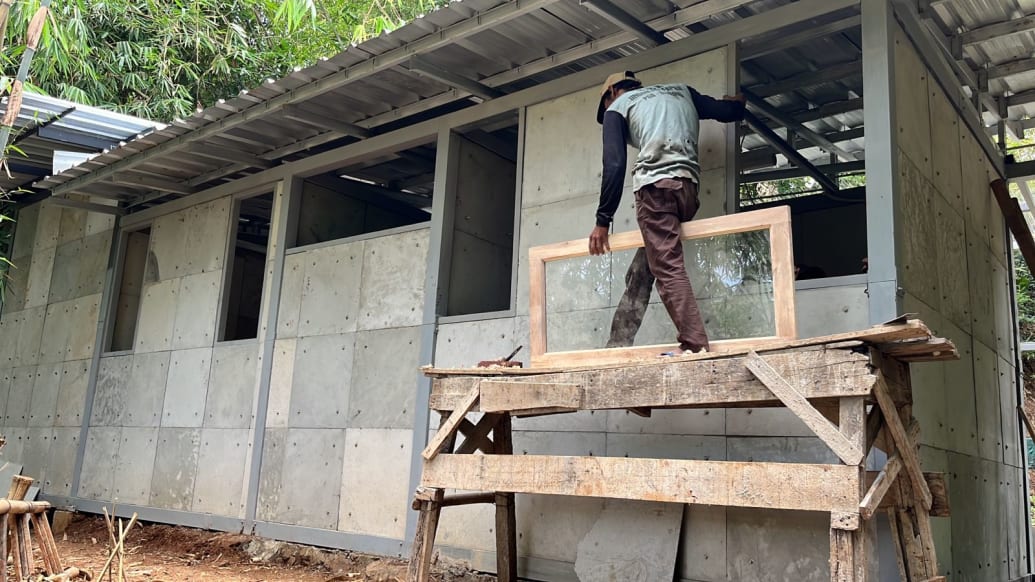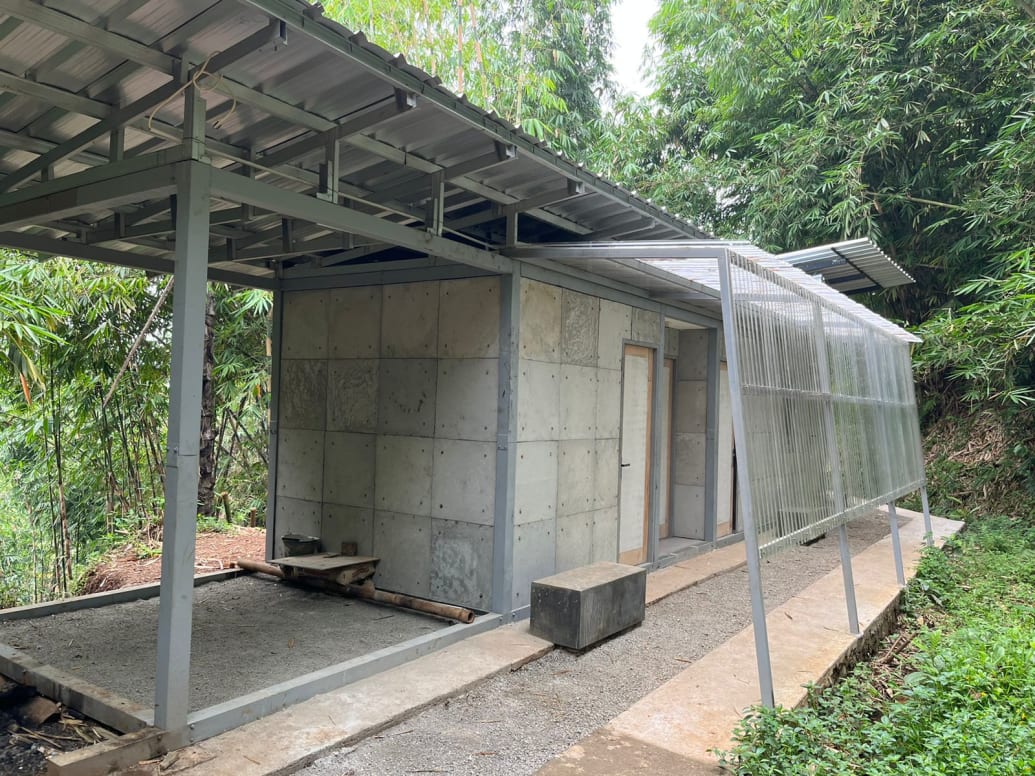Parents: Have you ever taken a look at your baby’s shockingly disgusting, poop-filled diapers and thought, “If only I could build low-cost, sustainable housing for low- and middle-income with this?” Well, now you can!
Sort of.
A team of researchers at the University of Kitakyushu in Japan have developed a new type of construction material with used, disposable diapers—and even used it to build a house. The team published a study on Thursday in Scientific Reports about their findings and say that it could be used to create low-cost housing for low-income countries.
Not only could this help alleviate the landfill waste from the diapers, but it could also help save up to eight percent of the sand in the concrete used to make buildings. All told, it’s a cheap and environmentally friendly way of creating new housing.

Installation of housing element.
Anjar Primasetra
“[By] considering the environmental value of waste recycling, the material gives benefit to be developed on a large scale and by involving society and other stakeholders in collecting and managing the waste of disposable diapers,” the study’s authors wrote.
Roughly 30 to 40 billion diapers are being disposed of in landfills each year in North America. Since the vast majority of these are made partly using plastics, they don’t break down easily. That means they just sit there, quickly piling up into a mountain of BS (that’s baby stink). Sometimes, they get incinerated, which saves space but results in a whole lot of harmful gas emissions being spread throughout the atmosphere.
That’s partly why the study’s authors decided to take a look at the material to solve another crisis in the form of housing in low- and middle-income countries like Indonesia. “Building material is one of the essential aspects in accommodating the supply and demand of low cost housing in Indonesia,” the authors wrote. “Recently, several researchers have devoted much time and effort to developing waste recycling for building materials since it is more ecologically benign, particularly for non‑degradable waste.”
It’s important to note that the diapers are washed before they’re used to create the material—so no worrying about your house smelling like the fetid and unholy diaper pail next to your kid’s changing table. The nappies were then shredded and mixed in different proportions with cement, gravel, sand, and water. After curing for 28 days, the authors tested the diaper bricks containing varying amounts of nappies within them for strength and durability—and complies with Indonesian building standards for a house with a floorplan of 85 square feet.
They discovered that the diapers could replace up to 10 percent of sand used in construction concrete to build the columns and beams of a three-story house; and it could replace up to 27 percent of the sand used for a single story house. Meanwhile, the diapers could replace 40 percent of the sand needed for the walls. All told the used nappies could replace up to eight percent of sand in an entire single-story house.

Using the diapers to replace sand also does the double duty of addressing the worldwide sand shortage (yes, that’s a thing). The stuff you find on beaches is actually the second-most used resource in the world behind water. Without it, floods and storms can surge out of control, destroying habitats and communities with it.
So, the next time your baby makes another stinky mess you have to clean up, just think about how they might one day be contributing to making the world a better place—but also, maybe you might want to think about getting a head start on potty training.




